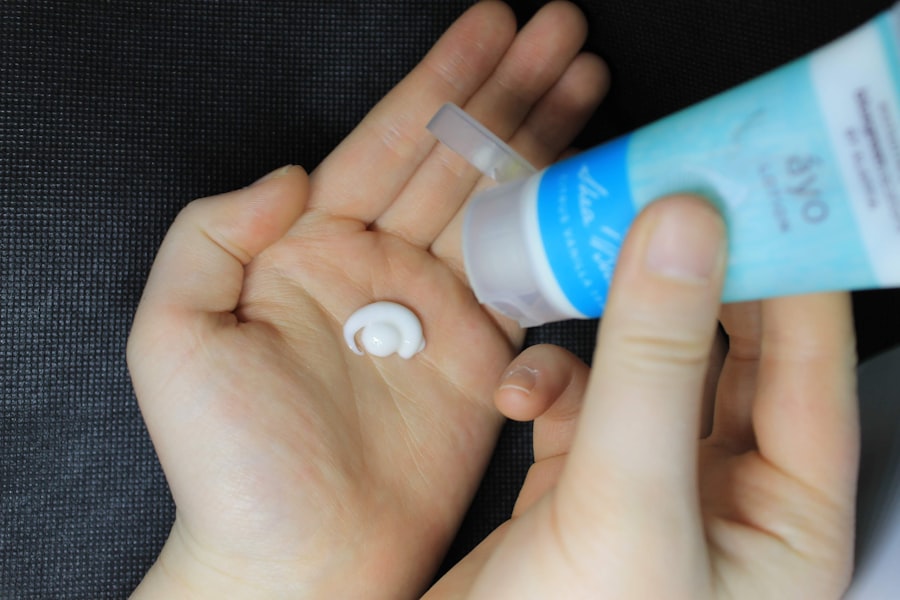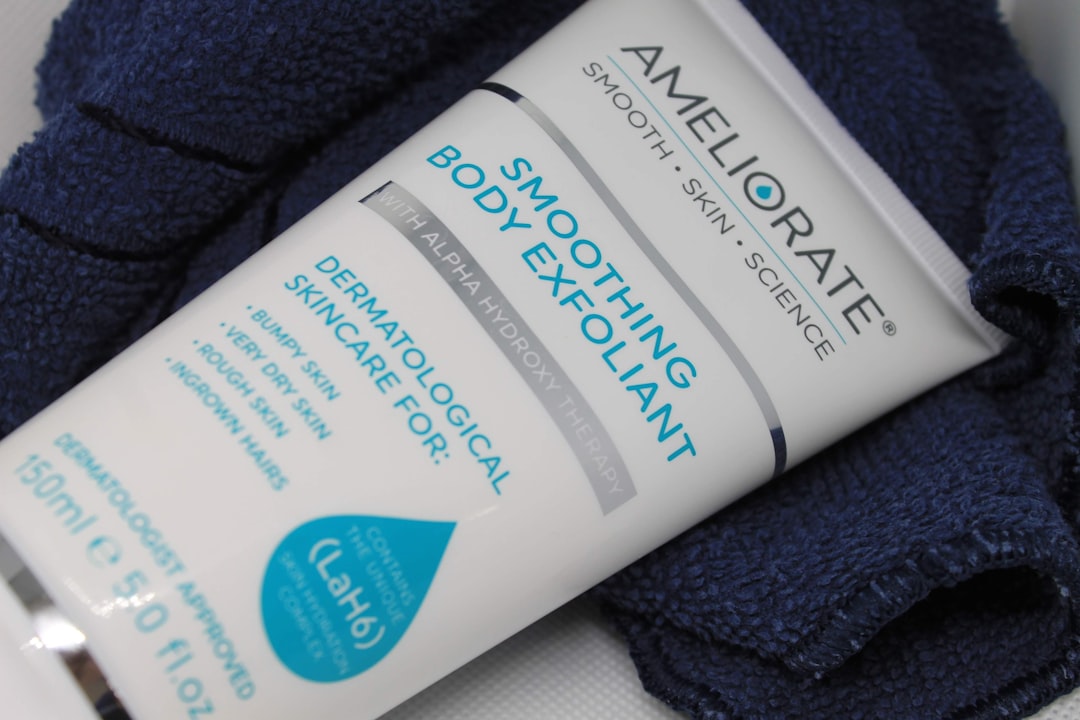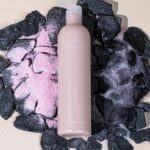Laser hair removal is a popular cosmetic procedure that utilizes concentrated beams of light to target and eliminate unwanted hair. The process works by emitting a specific wavelength of light that is absorbed by the pigment in the hair follicles. This absorption generates heat, which damages the follicle and inhibits future hair growth.
As you consider this treatment, it’s essential to understand that it is most effective on individuals with light skin and dark hair, as the contrast allows the laser to target the hair more effectively. During your initial consultation, a trained professional will assess your skin type, hair color, and overall health to determine if you are a suitable candidate for laser hair removal. They will explain the procedure in detail, including the number of sessions you may need for optimal results.
Typically, multiple sessions are required because hair grows in cycles, and the laser can only effectively target hair in the active growth phase. Understanding this cycle is crucial as it sets realistic expectations for your treatment journey.
Key Takeaways
- Laser hair removal targets hair follicles with concentrated light to inhibit future hair growth
- Shave the treatment area before the appointment and avoid sun exposure and tanning beds
- Use gentle cleansers and moisturizers, and avoid exfoliating or using harsh products
- Apply aloe vera or cold compresses to soothe discomfort and redness after treatment
- Use sunscreen with SPF 30 or higher and avoid prolonged sun exposure to protect treated skin
Preparing for Laser Hair Removal Treatment
Preparation is key to ensuring a successful laser hair removal experience. Before your first session, you should avoid sun exposure for at least two weeks. Tanning can increase the risk of side effects and may affect the laser’s ability to target hair follicles effectively.
If you have recently tanned or have a sunburn, it’s advisable to reschedule your appointment until your skin has returned to its normal tone. In addition to avoiding sun exposure, you should refrain from waxing or plucking hair in the treatment area for several weeks prior to your appointment. These methods remove the hair from the follicle, which is counterproductive to laser treatment.
Instead, shaving is recommended a day or two before your session, as it leaves the hair shaft intact while allowing the laser to penetrate effectively. Your practitioner may provide specific instructions tailored to your needs, so be sure to follow their guidance closely.
Post-Treatment Skincare Routine

After undergoing laser hair removal, your skin may feel sensitive and appear slightly red or swollen. It’s essential to adopt a gentle skincare routine to promote healing and minimize irritation. Start by cleansing the treated area with a mild, fragrance-free cleanser.
Avoid using harsh scrubs or exfoliants for at least a week following your treatment, as these can exacerbate sensitivity and lead to discomfort. Moisturizing is also crucial in your post-treatment routine. Applying a soothing lotion or gel can help alleviate dryness and promote skin recovery.
Look for products containing aloe vera or hyaluronic acid, as these ingredients are known for their calming properties. Additionally, be mindful of any signs of adverse reactions, such as excessive redness or blistering, and consult your practitioner if you notice anything concerning.
Managing Discomfort and Redness
| Discomfort and Redness Management Metrics | 2019 | 2020 | 2021 |
|---|---|---|---|
| Number of reported discomfort cases | 150 | 130 | 110 |
| Percentage of patients with reduced redness | 75% | 80% | 85% |
| Average time to discomfort relief (in minutes) | 20 | 18 | 15 |
It’s common to experience some discomfort following laser hair removal, but there are several strategies you can employ to manage it effectively. Over-the-counter pain relievers like ibuprofen or acetaminophen can help alleviate any mild pain or discomfort you may feel after the procedure. Always follow the recommended dosage instructions and consult with your healthcare provider if you have any concerns about taking medication.
In addition to pain relief, applying a cold compress to the treated area can significantly reduce redness and swelling. Simply wrap ice in a clean cloth or use a gel pack and apply it gently to the skin for short intervals. This method not only soothes the skin but also helps constrict blood vessels, which can minimize inflammation.
Remember to listen to your body; if discomfort persists or worsens, reach out to your practitioner for further advice.
Protecting Your Skin from Sun Exposure
One of the most critical aspects of post-laser care is protecting your skin from sun exposure. After treatment, your skin will be more sensitive and susceptible to sun damage. It’s essential to apply a broad-spectrum sunscreen with an SPF of at least 30 every day, even on cloudy days.
This protection helps prevent hyperpigmentation and ensures that your skin heals properly. In addition to sunscreen, consider wearing protective clothing such as wide-brimmed hats and long sleeves when spending extended periods outdoors. If possible, try to avoid direct sunlight during peak hours, typically between 10 a.
and 4 p.m., when UV rays are strongest. By taking these precautions, you can safeguard your skin and enhance the results of your laser hair removal treatment.
Avoiding Certain Activities and Products

After your laser hair removal session, there are specific activities and products you should avoid to ensure optimal healing and results. For instance, refrain from engaging in strenuous exercise or activities that cause excessive sweating for at least 24 hours post-treatment. Sweat can irritate the treated area and increase the risk of complications such as infection.
Additionally, be cautious with skincare products that contain harsh chemicals or fragrances. Avoid using retinoids, glycolic acid, or other exfoliating agents for at least a week after treatment, as these can irritate sensitive skin. Instead, opt for gentle, hydrating products that support healing without causing further irritation.
Your practitioner may recommend specific products that are safe for use after laser hair removal.
Monitoring and Maintaining Results
Once you’ve completed your laser hair removal sessions, it’s essential to monitor your results and maintain them over time. While many individuals experience long-lasting results, some may notice fine hairs regrowing after several months or years. If this occurs, don’t be discouraged; touch-up sessions can help maintain smooth skin and keep unwanted hair at bay.
Regularly assessing the treated areas will help you determine if additional sessions are necessary. Keep in mind that individual experiences vary based on factors such as hair type and hormonal changes. Staying in touch with your practitioner is vital; they can provide guidance on when to schedule follow-up appointments based on your unique situation.
Seeking Professional Advice for Any Concerns
Throughout your laser hair removal journey, it’s crucial to communicate openly with your practitioner about any concerns or questions you may have. Whether you’re unsure about post-treatment care or experiencing unexpected side effects, seeking professional advice is always a wise choice. Your practitioner is there to support you and ensure that you achieve the best possible results.
If you notice any unusual symptoms such as persistent redness, swelling, or signs of infection like pus or increased pain, don’t hesitate to reach out for help. Early intervention can prevent complications and ensure that your skin heals properly. Remember that your comfort and safety are paramount; maintaining an open line of communication with your practitioner will help you navigate any challenges that arise during your laser hair removal experience.
In conclusion, understanding the laser hair removal process and following proper pre- and post-treatment care can significantly enhance your experience and results. By preparing adequately, managing discomfort effectively, protecting your skin from sun exposure, avoiding certain activities and products, monitoring results, and seeking professional advice when needed, you can enjoy smooth skin with confidence.
If you’re interested in learning more about aftercare for laser hair removal, you may want to check out this article on customizing your skincare routine. This article provides helpful tips on how to tailor your skincare regimen to best support your skin after laser hair removal treatments. Additionally, you may also enjoy reading this article on fashion trends for hair-free skin or this article on at-home hair removal methods for more information on maintaining smooth, hair-free skin.
FAQs
What is aftercare for laser hair removal?
Aftercare for laser hair removal refers to the steps and precautions that should be taken after undergoing a laser hair removal treatment to ensure proper healing and optimal results.
Why is aftercare important for laser hair removal?
Aftercare is important for laser hair removal to minimize the risk of complications such as skin irritation, redness, and swelling, and to promote the best possible results from the treatment.
What are some common aftercare tips for laser hair removal?
Common aftercare tips for laser hair removal include avoiding sun exposure, using gentle skincare products, avoiding hot showers and baths, and keeping the treated area clean and moisturized.
How long does aftercare for laser hair removal last?
Aftercare for laser hair removal typically lasts for a few days to a week, depending on the individual’s skin sensitivity and the intensity of the treatment.
Are there any specific products recommended for aftercare for laser hair removal?
Some recommended products for aftercare for laser hair removal include gentle cleansers, fragrance-free moisturizers, and soothing aloe vera gel to help calm the skin.
What should I avoid after laser hair removal treatment?
After laser hair removal treatment, it is important to avoid sun exposure, hot showers, harsh skincare products, and picking or scratching the treated area to prevent irritation and complications.





